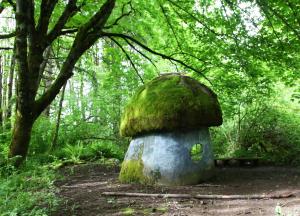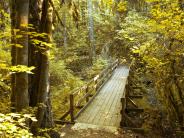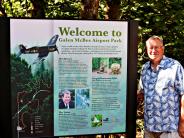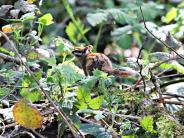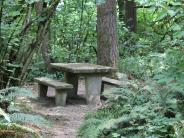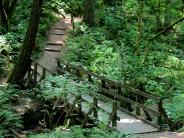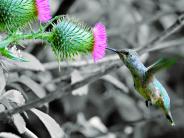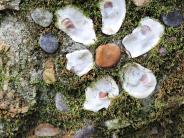Galen McBee Airport Park
Named for McMinnville’s first Parks and Recreation Director and airport manager who served McMinnville from 1968-1997. Great Trillium beds in the spring, a flowing creek year-round, forested one-mile and ½ mile soft-trail loops with bridge crossings, and several micro-environments that are worth exploring. Picnic tables, drinking fountains and a “mushroom house” add flavor to this park. And because it is adjacent to the McMinnville Municipal Airport, park visitors can catch a glimpse of local airplanes taking off and landing on nearby runways. A portable restroom is located at the parking/trailhead entry. Dogs must remain leashed (off-leash activity prohibited). Smoking is also prohibited in this wooded park. Park construction was completed and opened in 1977.
Reminder: It is a class B Park Violation to dig up or remove any plant material from a park (MMC 12.36.050(C)(1). If you see someone doing this, please call non-emergency YCOM at 503.434.6500 and let them know immediately that it is happening so we can stop a few people from destroying these wonders for everyone.
Uncommon Plants at Galen McBee Airport Park
Information Provided by Jim Culbert, member, Native Plant Society of Oregon
This Park provides suitable habitat for two native plants uncommon in our area, Pink Fawn Lily (Erythronium revolutum) and Hounds Tongue (Cynoglossum grande).
The Pink Fawn Lily, a member of the Lily family, is generally found in open to moderately dense moist woodlands and riverside areas at low elevations from British Columbia to Oregon. It blooms in the early Spring. It is closely related to the White Fawn Lily (Erythronium oregonum) that is quite common in our area and in this Park. The bulbs were eaten by native people, having a slightly bitter, milky taste, but it has also been said that they had to be taken with plenty of water to avoid getting sick.
Hounds Tongue is generally found in open forests west of the Cascades from western Washington south through much of California and east through the Columbia Gorge. It blooms in the early Spring. The name is given to the plant because the shape and roughness of the leaves resembles a dog's tongue. In the past, it was used to treat skin diseases and dog bites (I do not know what part of the plant was used). A piece of folklore indicates a piece placed in one's shoe would protect you from being barked at by strange dogs (but please don’t harvest from our parks to see if it works - there are park rules that prohibit removing vegetation from our city parks). There are about eighty species of this Genus in the Borage family widely distributed throughout the temperate regions of the world.
Both plants have been studied in the Park since 2013. There is great concern that they will die out here because Park visitors continue to violate park rules by picking the flowers and digging up the plants.
These violations continue to hinder our attempts to collect seed so that additional plants can be replanted in the Park.
We want to thank Mr. Culbert for his discovery and for helping us all understand the importance of plants in our world. There are opportunities around every corner in our parks and we hope this information inspires you to get out there, ask questions, make discoveries and help us keep and protect our important park resources here in McMinnville. If you’d like to get in touch with Mr. Culbert about this information, please feel free to reach out to him at jhculbert@gmail.com.
Click any thumbnail image to view a slideshow

